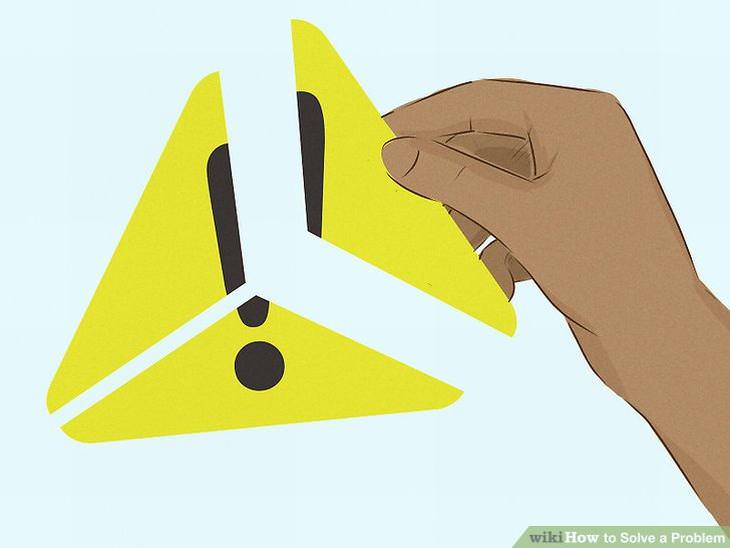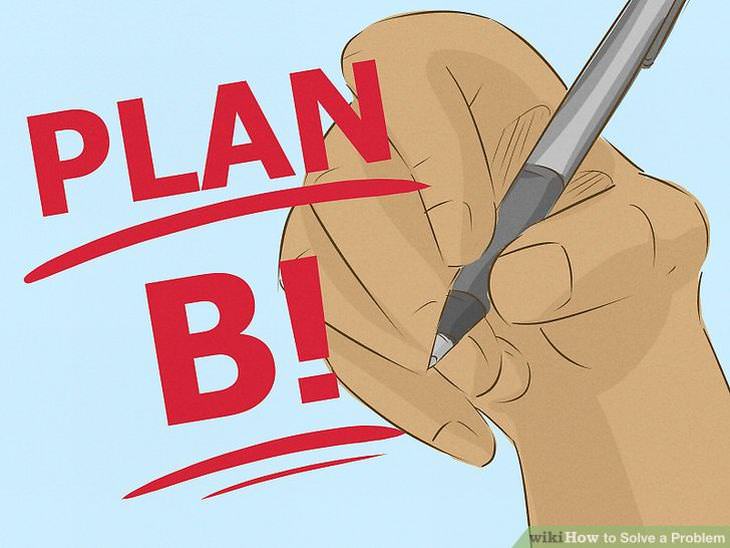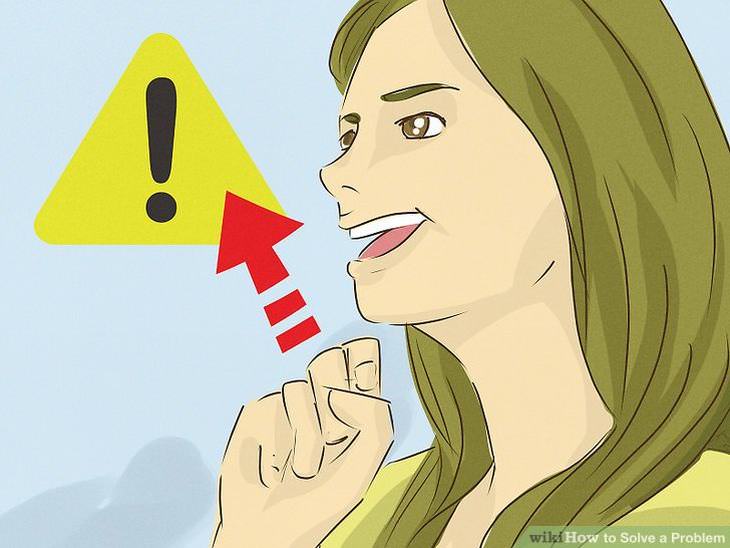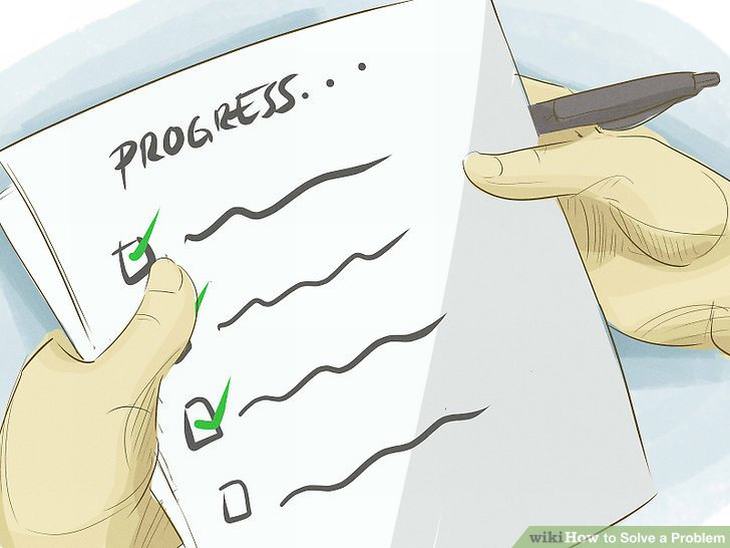

1. Define the problem
It’s important that you find the real cause of a problem and define it, rather than just looking at the symptoms.
• An example of this is a constantly messy room. It could be messy all the time because you need more storage, not because you’re an inherently messy person.
• Be clear when you’re attempting to define the problem. You can achieve this by being as honest with yourself as possible.
• Is the problem real or self-created? Is it something that you need to solve or is it something that you want? Put things into perspective to navigate through the problem-solving process.

2. Make important decisions first
Making decisions can help you move forward in regard to solving, so recognize the ones you need to make and make them.
• If you have several problems, decide which problem you need to tackle first, and aim to solve one at a time.
• Don’t doubt the decisions you make. You just have to make them and move forward rather than wondering what would have happened if you had made your mind up another way.

3. Simplify the Problem
Always try to break down a complex problem into smaller parts, and deal with these parts individually. This will always help you to make sense of the overall problem, and thus help you find an adequate solution to it.
• If you need to do many assignments to pass a class, focus on the total number, then approach them one by one.
• You can also try combining problems and solving them together when it’s possible to do so. Try listening to a recorded lecture while walking to class if you’re running out of time to study, or flip through note cars while you’re waiting for dinner to finishing cooking.

4. Write down what you know and what you don’t know
Establish the knowledge and information that you already have to solve the problem. Next, seek out the knowledge and information that you do not know and organize it in a meaningful way.

5. Anticipate future outcomes
You should always have a Plan B solution to a problem just in case Plan A doesn’t work out. Think about how each option would play out and consider the possible outcomes, as well as how they would affect you and those around you. Create a best-case and worst-case scenario in your head, and pay attention to how they make you feel.

6. Allocate your resources
Figure out what you need to solve the problem in terms of time, money, effort, travel and so on.
• If you have a deadline to reach, it might be a good idea to skip the gym or cooking dinner to make sure that you reach it.
• Cut down on any unnecessary tasks, such as getting your groceries delivered rather than heading to the store yourself.

1. Brainstorm different solutions
Think of different ways to solve your problem and realize that there’s usually more than one approach to solving it. Decide which solution is the most plausible and go for it.
• Write down your alternatives if you have to. Doing this will prevent you from forgetting your options and allow you to cross off solutions that are not plausible.

2. Try different approaches
Certain problems are straightforward and can be solved using analytical and logical skills, but others might require you to rely on your emotions to guide you. Other problems require a combination of all three things to be solved, and you might even have to rely on your gut instincts to solve them.
• If you get a job offer across the country that offers you good pay but requires you to move, you need to think of the logical solution, but also consider your thoughts, feelings and the way your decision will affect others.

3. Get advice from others
Don’t be afraid to seek out advice from other people. You might know someone who has faced a similar problem that you can call upon.
• For example, if you’re buying a home but are unsure of your final decision, it might be a good idea to speak to other homeowners to see their thoughts and regrets about buying their homes.

4. Monitor your progress
You should keep an eye on your progress when you’re working toward a goal. If you’re going in a positive direction, make sure you keep going. If you’re realizing that you need to change your approach, then you should do so too.
• Keep a journal to record your progress, successes, and challenges. Look at this for motivation when you feel discouraged.

1. Calm Down
Always try and be calm when you’re making a decision, because anxiety and nervousness can cloud your judgment. Take a deep breath, center yourself and relax before moving forward.
• Go for a walk or write in a journal. Do what you can to make yourself feel calmer.
• Remember that the first step toward something is often the scariest. Try doing something small to start.

2. Address underlying problems
If the same problem keeps cropping up over and over again in your life, you might need to solve something underlying first prior to tackling it. This will help you to solve it for good.
• Feeling overwhelmed, stressed or angry could indicate that you’re burned out. Make a list of things that make you feel this way, and cut down on them in the future.

3. Seek therapy
Struggling to make decisions constantly could indicate that you might have a mental health issue or low self-esteem, so consider seeing a mental health professional if this is the case for you. He or she will be able to provide insight and challenge you to see things more positively and realistically.